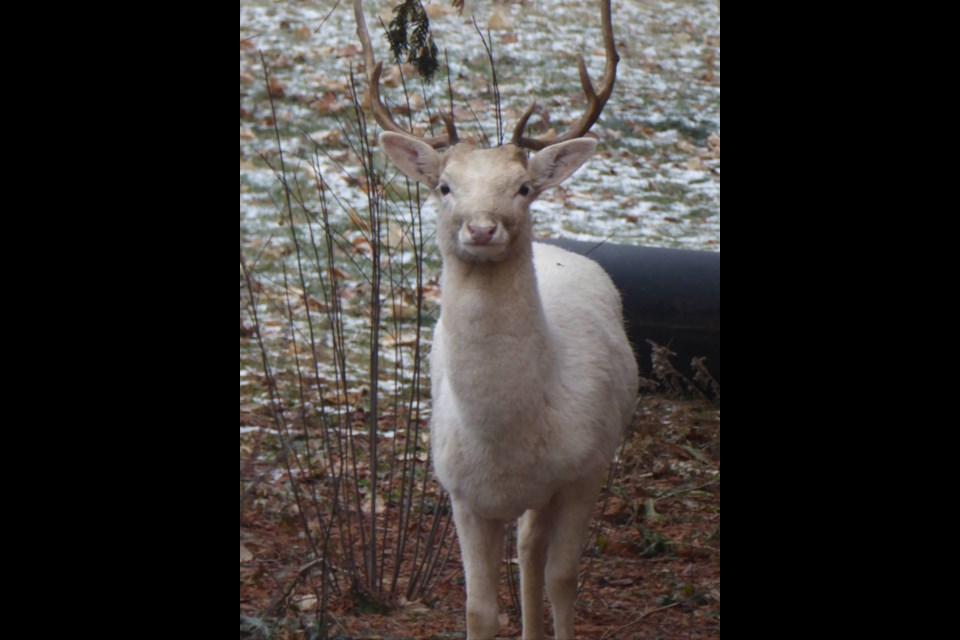The sighting and shooting of a white moose recently grabbed the headlines.
See: White moose illegally killed near Foleyet: police
We hadn't heard of white moose before, but interestingly, BayToday readers thought to send us pictures of white deer that recently visited their home
"On December 18, my wife Suzanne and I were absolutely amazed as we both witnessed a white buck grazing on our lawn," wrote Charlie Bouvier. "Needless to say we could not believe our eyes and both of us hastily reached for our cameras and started shooting pictures of this awesome, extremely rare, and most beautiful animal. In the past we had other wildlife visiting our backyard but nothing like this.
"We reside in a rural area east of Ottawa in Hammond within 1-2 km of the Larose Forest which covers an area of 12,000 hectares. The fact that this 'Prince Charming' visited us on two consecutive days mostly in the a.m. part of the day only magnifies this magical and once in a lifetime experience. We call him 'Snowflake.'"
Albino deer are "Exceedingly rare! In fact, the chances of an albino deer being born are about 1 in 20,000," according to John Bates, Wisconsin Northwoods naturalist and co-author of White Deer: Ghosts of the Forest.
"While relatively rare, white deer are not an endangered species per se, but rather exhibit a rare genetic variation found among many species of wildlife" according to "Sunday Morning" contributing videographer Carl Mrozek.
"White deer can result from two primary genetic mutations, leucism and albinism. Leucism is a general term for the phenotype resulting from defects in pigment cell differentiation stemming from excessive inbreeding. This renders some or all of their cells incapable of making any pigment, which results in their all-white or partially-white (piebald) coats. Hence, as stunning as they are, white and whitish deer are the result of mutations of recessive genes broadly distributed in white-tailed deer populations.
See: Nature up close: White deer
According to Charlie's brother Bernie Rozon, the Bouvier's white deer, "walked up to Charlie in the back yard and looked straight at him as if posing for the pictures. Thought you might enjoy this."
Have you taken an interesting photo recently? Send it with details to [email protected]



